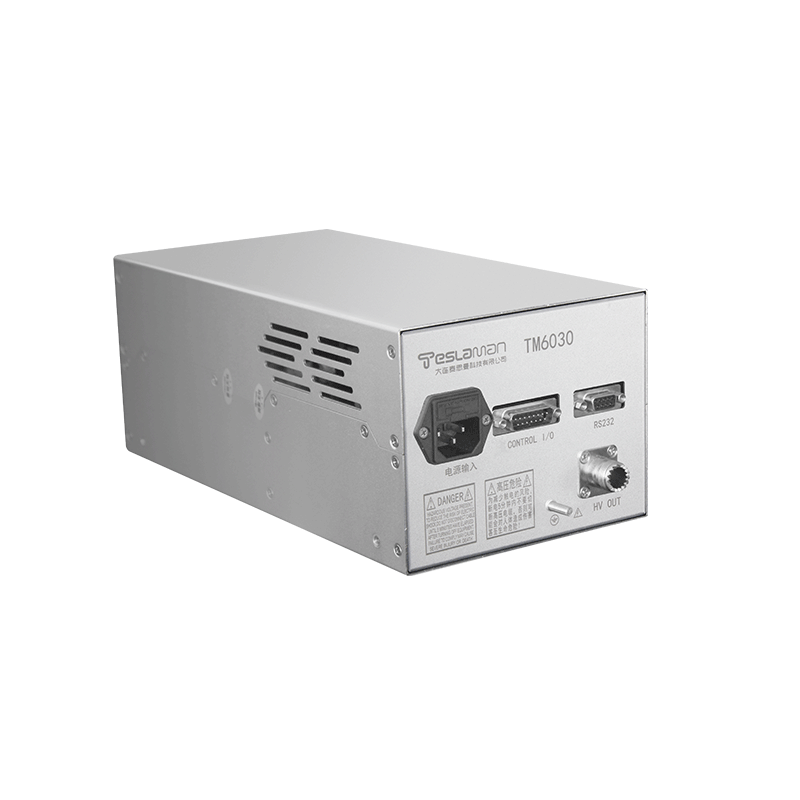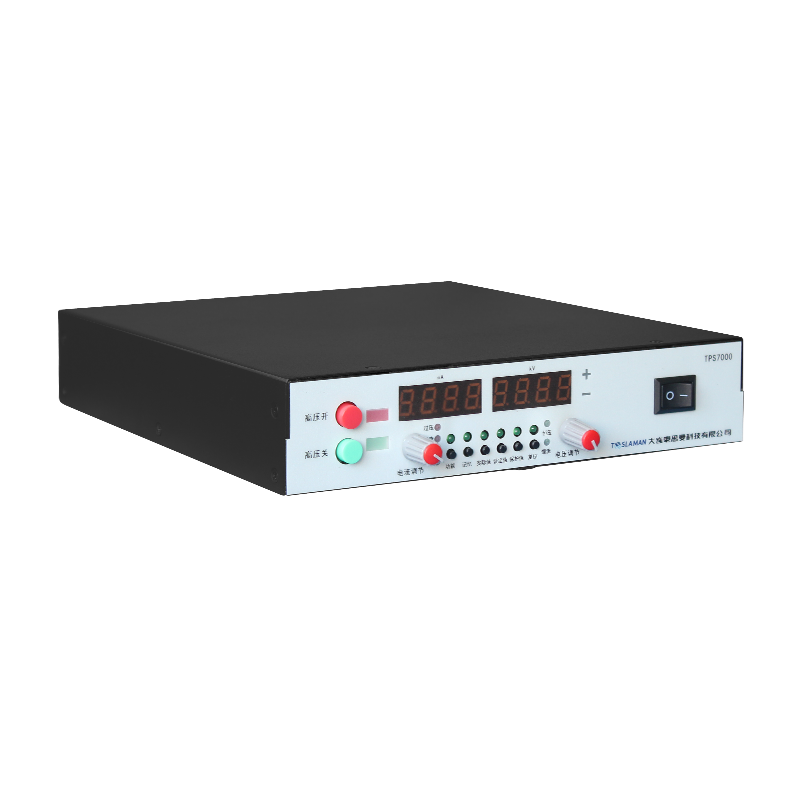Key Role of Dynamic Response Characteristics of High-Voltage Power Supplies in Etching Processes
Correlation Between Dynamic Response and Etching Accuracy
In semiconductor etching processes, the dynamic response characteristics of high-voltage power supplies—i.e., their real-time feedback capability to input signal changes—directly determine etch profile precision. Dynamic response encompasses transient response (e.g., voltage step adjustments) and steady-state response (e.g., sustained output stability), with core metrics including:
Response Speed: Timeliness of power supply adjustments to ion energy/flux, affecting etch rate consistency.
Stability: Output voltage fluctuations must remain below ±0.1% to prevent sidewall roughness or over-etching due to abrupt plasma density shifts.
Robustness: Maintains output accuracy during parameter changes (e.g., material switching), minimizing recalibration time.
Regulation of Plasma Behavior via Dynamic Response
High-voltage power supplies control physical and chemical reactions in plasmas by modulating ion energy and flux:
Ion Energy Control:
Power supplies with high response speeds (microsecond-level) enable precise ion energy gradation. High-energy ions generate vertical bombardment for steep sidewalls (aspect ratio >10:1); low-energy ions enhance surface smoothness (roughness <1 nm).
Ion Flux Uniformity:
Dynamic response optimizes electric field distribution, ensuring ion flux uniformity across wafers (non-uniformity <2%), eliminating local over-etching or residues.
Process Adaptability:
Capacitively Coupled Plasma (CCP): Requires kHz-level voltage polarity switching for anisotropic etching.
Inductively Coupled Plasma (ICP): Relies on high-power dynamic response to sustain high-density plasma stability.
Dynamic Response Technologies for High-Precision Etching
High-Frequency Switching Control:
Resonant switching topologies (e.g., quasi-resonant flyback) reduce power loss via valley switching, improving response speed to microseconds while minimizing electromagnetic interference to plasma.
Real-Time Feedback Systems:
Integrated voltage/current sensors and PID algorithms dynamically compensate for load fluctuations.
Example: Automatic power adjustment (response time <100 μs) upon detecting plasma impedance changes to stabilize etch rates.
Multi-Parameter Co-Optimization:
Combines frequency-domain analysis and time-domain simulations to model power supply-plasma coupling, predicting dynamic response curves under varied parameters to avoid resonance shifts.
Emerging Trends: Intelligence and Multi-Physics Coupling
AI-Driven Optimization:
Machine learning algorithms analyze historical process data to predict optimal voltage/frequency combinations, enabling adaptive dynamic response strategies (e.g., deep reinforcement learning control).
Quantum Power Technology:
Explores high-voltage modulation based on quantum tunneling effects to enhance energy resolution for atomic-scale etching (target precision: ±0.01 eV).
Multi-Scale Modeling:
Integrates plasma dynamics, power circuitry, and thermodynamics to achieve cross-scale etch profile prediction (from wafer-level to atomic-level).
Conclusion
The dynamic response characteristics of high-voltage power supplies are pivotal for advancing etching processes from the micrometer to the atomic scale. Future breakthroughs will require deeper integration of intelligent control, quantum technology, and multi-physics modeling to overcome precision barriers in 3D structure etching and 2D material processing, ushering semiconductor manufacturing into the sub-nanometer era.




















